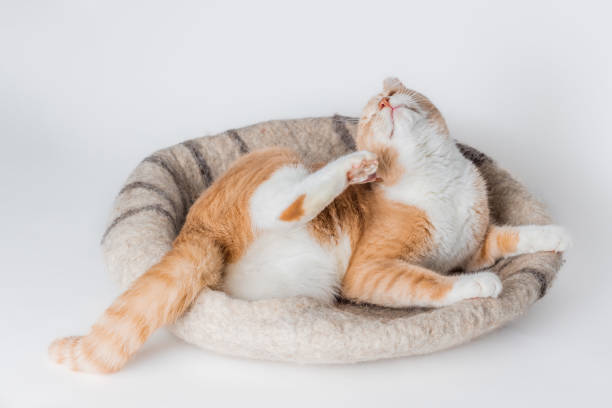Congenital disorders
Cat ear ailments
Is your cat scratching his or her ears more than usual? Do you detect any difference in your cat’s ears? If this is the case, your cat may be suffering from one of the most frequent cat ear issues.
It is important to understand the most frequent ear problems that a cat might have, as well as the signs to check for. If one or more ear trouble symptoms are seen, it is always better to take your cat to your veterinarian’s office for an ear examination.
In the article “Feline Ear Disorders,” the Cornell Feline Health Center (CFHC) at the College of Veterinary Medicine of Cornell University said a cat is capable of detecting sounds ranging in frequency of up to about 60,000 vibrations per second or greater. This is three times more than a human’s capacity.
It noted that most cats will live their lives without encountering a severe problem with their ears. However, if they do have a specific ailment, it can be very painful and impair an animal’s hearing.
James Flanders, DVM, an associate professor of surgery at Cornell University’s College of Veterinary Medicine said that most feline ear disorders are readily treatable and will not result in permanent hearing loss but some conditions may render a cat partially or totally deaf if they remain unrecognized and untreated.
Two classifications of ear ailments
The same article provided two (2) general classifications of cat ear ailments: the congenital conditions and the acquired disorders.
Congenital conditions are ailments that are genetically transmitted from parents to offspring. One of these is a hereditary abnormality known as “fold-ears,” in which the tip of a cat’s pinna is twisted sharply either toward or away from the skull. This strange syndrome is seldom connected with hearing loss. Cats with particularly deformed ears, on the other hand, typically have skeletal issues that might be problematic.
Flanders said that another predominantly heritable condition is atresia, which is a “fault” in the development of the ear canal that can result in partial or entire occlusion of the channel. He explained that a wall forms in the ear canal, making it difficult or impossible for sound to reach the cochlea. He said that it is occasionally movable, and if this wall can be removed, hearing may be restored.

(Photo from iStock royalty-free images.)
Some cats are born deaf, and the condition cannot be remedied. White cats with blue eyes are the most vulnerable to congenital deafness due to a genetic abnormality. Flanders said around 80 per cent of white cats with two blue eyes will begin to show indications of deafness around the age of four days due to cochlear degeneration.
Most cat ear ailments are acquired, according to the same article. Cats who are constantly fighting or scratching their ears excessively, for example, may develop hematoma, a deposit of blood from damaged vessels that gathers between the skin covering the ear and the underlying cartilage. They may also be affected by polyps, which are tiny growths that protrude from the surface of a mucous membrane; and squamous cell carcinoma, which can appear on the ear tips and is more common in cats that are often exposed to intense sunlight.
A cat’s eardrum thickens with age. Hearing problems and probable deafness are common in older cats. Deafness can also arise as a side effect of some drugs, such as antibiotics or diuretics.
Flanders said the most prevalent is otitis externa, an infection of the outer ear canal. This condition is caused by an infection of the ear canal with infectious organisms, most often ear mites.

(Photo from iStock royalty-free images.)
Otitis externa is most common in cats who are predisposed to seborrhea, a skin condition characterized by excessive oily discharge from the sebaceous glands. As a result, excess ear wax accumulates, allowing invading mites, germs, and other creatures to thrive. If otitis externa is not treated properly, the infection can spread to the middle ear (otitis media) and the inner ear (otitis interna). In the most severe cases, the eardrum and inner ear might be irreversibly destroyed, resulting in hearing (impairment) and an acute impairment of balance on the afflicted side or sides due to the condition’s influence on the vestibular system.
Ways to prevent ear ailments in cats
Flanders gave a few simple tips:
1. Reduce the amount of time your cat is exposed to direct sunlight, especially if it is white or faintly colored.
2. Keep your surroundings clean to prevent the spread of ear mites and other potentially infectious pathogens.
3. Examine your cat’s ears on a regular basis for indications of infection such as swelling, discharge, discoloration, and dirt and debris accumulation.
4. And, if symptoms persist, consult your veterinarian for assistance.
About the Author: Mariana Burgos is a freelance artist. She has been a solo parent for 16 years now because she is wife to a desaparecido. She and her daughter are animal lovers and are active in advocating not only human rights but the rights of animals as well.
Please enable JavaScript to view the comments powered by Disqus.

